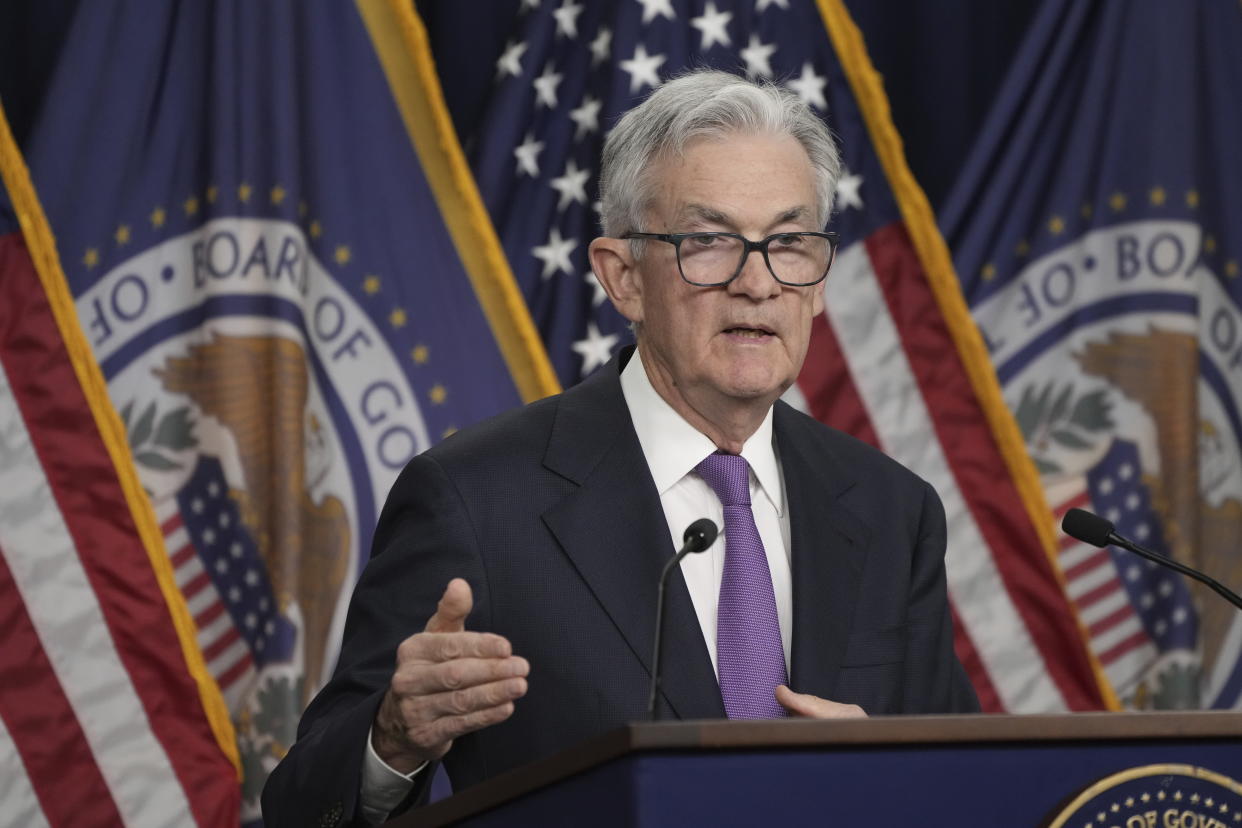The stock market sell-off is all about the 'pain trade' in bonds
Stocks continued their recent sell-off on Tuesday amid a slew of concerning headlines for investors.
Labor market data showed job openings unexpectedly jumped in August. An ongoing labor strike in the auto sector is intensifying. And surging oil prices are within a few percentage points of 2023 highs.
But as the wall of worry builds in markets and the S&P 500 backpedals, market strategists told Yahoo Finance the story behind the action is all about the bond market. Investors fear a hot economy could prompt the Federal Reserve to raise interest rates again.
Read more: What the Fed rate-hike pause means for bank accounts, CDs, loans, and credit cards
"Yields are the biggest pain trade for all types of investors right now," eToro US investment analyst Callie Cox said. "Interest rates fundamentally change how people think about their money and investing. And you're seeing that happen live right now."
On Tuesday, the yield on 10-year Treasury notes touched 4.8%, its highest level since 2007.
All else equal, higher interest rates make "safer" investments like money market funds, which invest in things like Treasury bonds, look more attractive to investors, Cox said. That flight to safety has grown increasingly appealing as investors digest the "higher for longer" view that carried through Fed Chair Jerome Powell's press conference on Sept. 20.
"We need policy to be restrictive so that we can get inflation down to target," Powell said during the press conference. "And we're going to need that to remain to be the case for some time."
The Fed's Summary of Economic Projections released ahead of Powell's comments showed that officials see rates coming down less than previously forecast in both 2024 and 2025. At the end of 2026, interest rates are still projected to be higher than the so-called neutral rate of interest, which Fed officials expect to prevail over the longer run.

The S&P 500 slid more than 1% on the day of the Fed's announcement and has continued tumbling since.
Meanwhile, yields on both 10- and 30-year Treasuries have surged, with the 10-year yield increasing roughly 50 basis points in the two weeks since the Fed meeting.
And the speed of this move has appeared to change investor expectations around the role that fixed income plays in portfolios.
"Investors simply appear to be demanding higher yields to compensate for the risk that comes with investing over a longer period in fixed income," wrote Keith Lerner, chief market strategist at Truist Wealth.
"In technical jargon, this excess yield is referred to as the 'term premium,' which was artificially depressed following the global financial crisis, as central banks were significant buyers of longer-term bonds at a time of tepid economic growth and inflation."
The quick pace of that "violent" move higher is what has shaken markets, according to Baird strategist Michael Antonelli.
"What the market hates is when things move rapidly," Antonelli said. "It's not necessarily the level of rates but how fast this is happening, and that has got markets worried."
"What's really spooking the market isn't really the level of rates but it's more about the volatility of rates," Bank of America strategist Ohsung Kwon recently told Yahoo Finance. "Once volatility settles, I think equities can still work."
Bank of America's equity strategy team sees a case for the S&P 500 to still end the year at 4,600, about 7% higher than current levels.
With much of 2023's rally driven by the "Magnificent Seven" tech stocks, BofA also sees opportunity in the equal-weighted S&P 500 rather than the traditional market cap-weighted index, which is heavily driven by the Magnificent Seven.
A key to removing volatility could come from economic data, Antonelli said.
Since Powell indicated stronger economic data could push the Fed toward another rate hike, positive economic news has driven stocks lower. Therefore weak economic data, or "a really bad jobs report," could provide stocks some reprieve, per Antonelli. "Something that says the economy is not reaccelerating enough to spike inflation more," he said.
The next major look at the economy is expected on Friday. The September jobs report is anticipated to show there were 170,000 jobs added to the economy last month, slightly lower than in August, with the unemployment rate expected to move down slightly to 3.7%.
A report that is in line with consensus, however, may not be enough to steady skittish markets. As Cleveland Fed president Loretta Mester told reporters on Tuesday, "If the economy looks the way it did at the next meeting similar to the way it looked at our recent meeting, I would do the further rate increase."
Josh is a reporter for Yahoo Finance.
Click here for the latest stock market news and in-depth analysis, including events that move stocks
Read the latest financial and business news from Yahoo Finance
